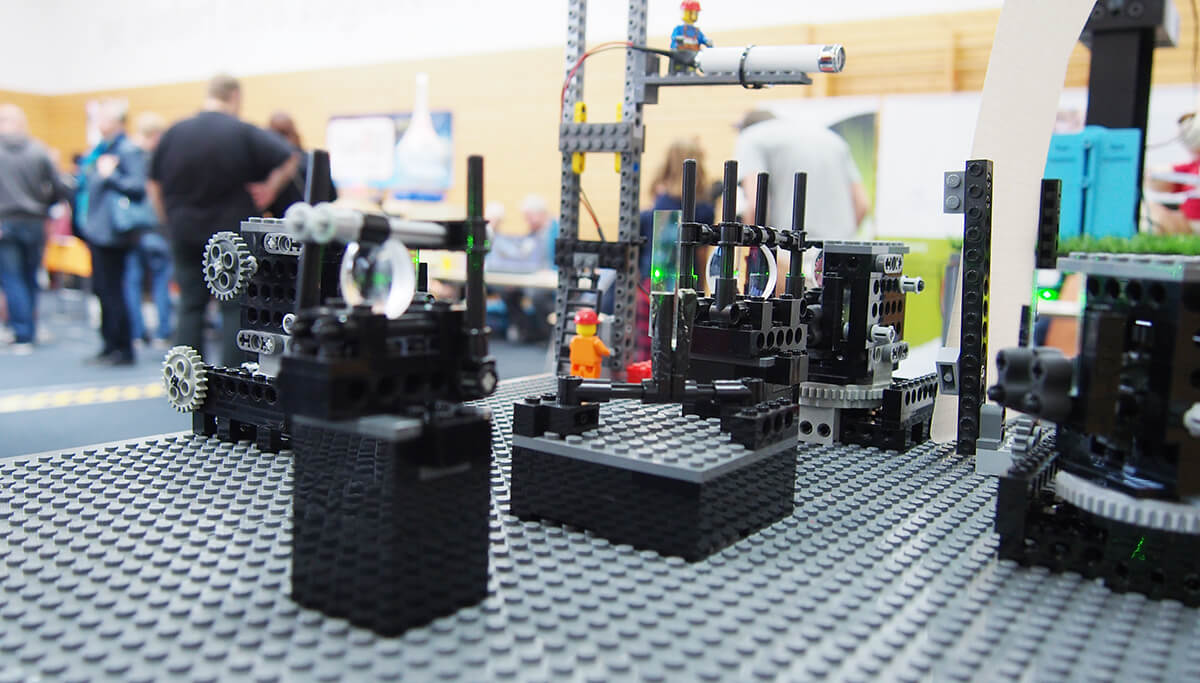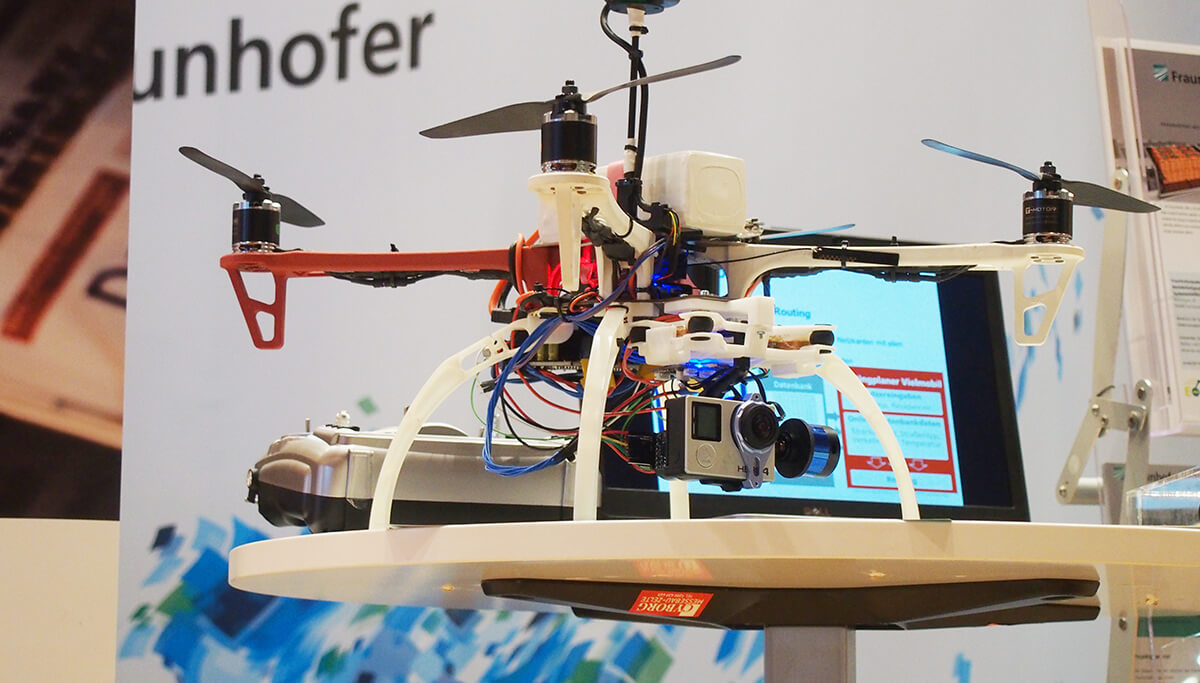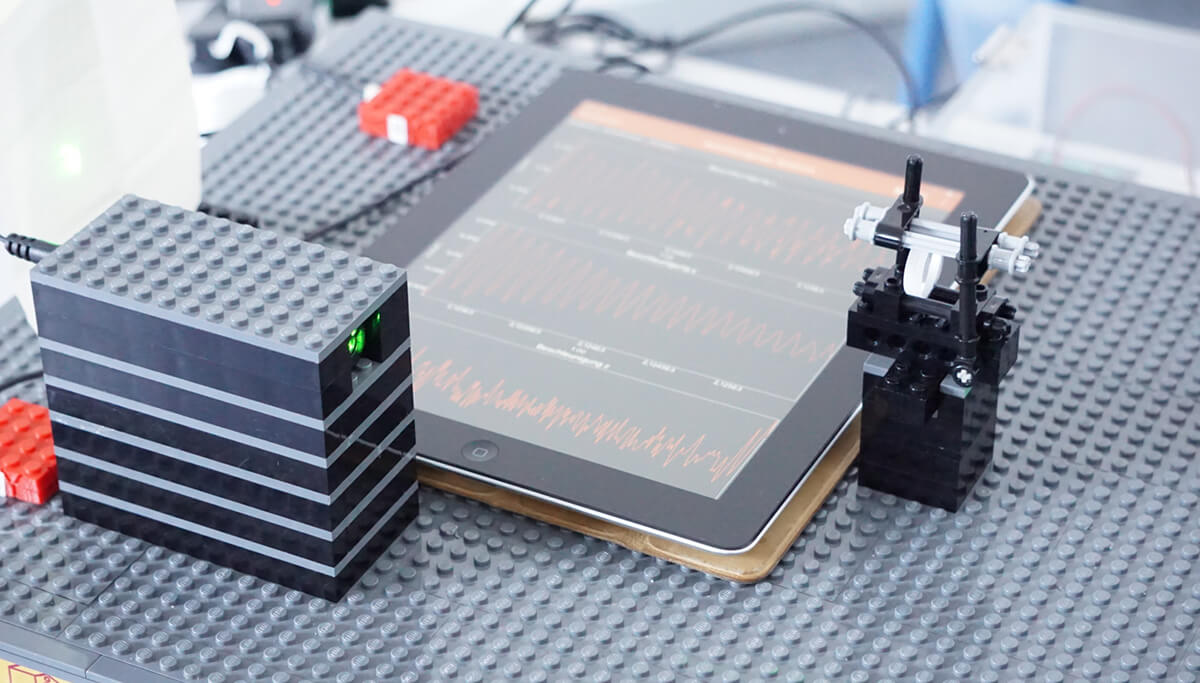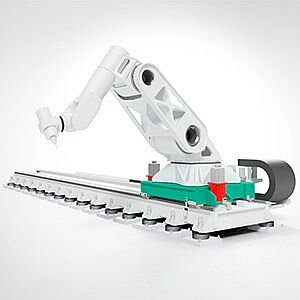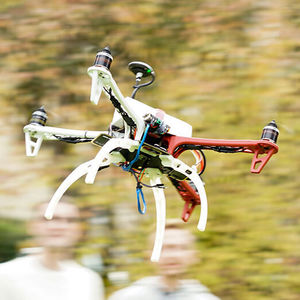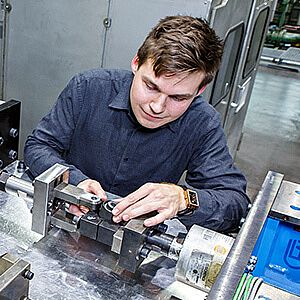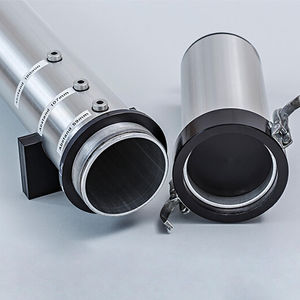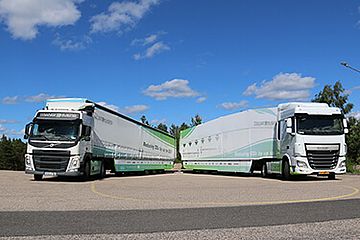OpenAdaptronik.
Adaptive structures, open source, digitalization, maker

The high precision of photonic systems such as laser cutting systems or optical measuring technology is only possible if disruptive vibrations are kept away from the sensitive components. In the past, highly specialized and correspondingly expensive active systems have been used for this purpose. Examples of this are active vibration isolation for microscopes and astronomy telescopes or vibration-isolated tables for experiments with lasers. The OpenAdaptronics project aims to make this technology accessible for a wider range of applications.
Disruptive vibrations and photonics in everyday life
Disruptive vibrations pose problems not only in high-tech photonic applications but also in a variety of everyday applications, such as the installation of data projectors with the greatest possible impact sound insulation or the vibration-isolated mounting of digital cameras for mobile applications (dashboard cameras/drones). At present, the underlying technology of adaptive structures is only available to large companies and research establishments involved in the development of photonic systems.
The OpenAdaptronics project, on the other hand, aims to open up the technology for a broad range of applications by developing an open source toolkit – a freely available construction kit. In particular, the aim is also to provide small and medium-sized enterprises (SMEs) with tools with which they can significantly improve the precision of their products and developments by means of powerful yet inexpensive adaptronic vibration reduction systems. The Federal Ministry of Education and Research (BMBF) supports the OpenAdaptronics project as part of the “Open Photonics” funding measure.
Open source toolkit
The toolkit to be developed in the OpenAdaptronics project is intended to enable private users and SMEs developing photonic technologies to record their specific vibration problems, simulate them easily and thus analyze them better. As a result, it is possible to achieve an improved basic understanding of vibration phenomena in photonic systems. In addition, the experimental and simulative analysis is used to design and dimension suitable low-cost components. In this way, developers can develop a solution tailored to their photonic system and implement it prototypically with a minimum of resources. An open platform for documenting the tools and designs completes the open source toolkit.
Reasonably priced, easily available components for all
The tools and systems to be developed will be available under open source licenses to make the technology easily available to the general public and to lower the entry barriers for their own scientific and technical investigations. Particular importance is attached to the fact that the adaptronic systems can be implemented using reasonably priced and easily obtained components (sensors, electronics, actuators) or components that can be produced inexpensively and flexibly, e.g. in FabLabs. Such systems can easily be adapted to the developer’s own photonic system and vibration problem. A free knowledge platform is intended to facilitate the exchange between potential customers and providers of adaptronic systems and services. The project and its utilization are supported in a variety of ways by the FabLab in Darmstadt.
Join in!
The key element of the project is the web-based knowledge platform which will emerge as the project progresses. Not only do the scientists feed the platform with tools, instructions and initial practical examples – this range already covers the entire chain from problem analysis to the development of adapted hardware components – but also the users. For only when the users contribute, in the form or their own instructions and practical examples for very individual developments, will the knowledge platform come to life. Find out more and join in at::
The German Federal Ministry of Education and Research supports the “OpenAdaptronics” project as part of the “Open Photonics” funding measure. The aim of the measure is to facilitate new forms of collaboration between science and industry with ordinary citizens, using photonics as an example, and thus to open up additional innovation paths and potential. It is part of the “Photonics Research Germany” program and an integral component of the Federal Government’s high-tech strategy.
Contact
- Heiko Atzrodt
- Phone: +49 6151 705-349
- Heiko.Atzrodt@lbf.fraunhofer.de
- Dr. Dirk Mayer
- Phone: +49 6151 705-567
- direk.mayer@lbf.fraunhofer.de
